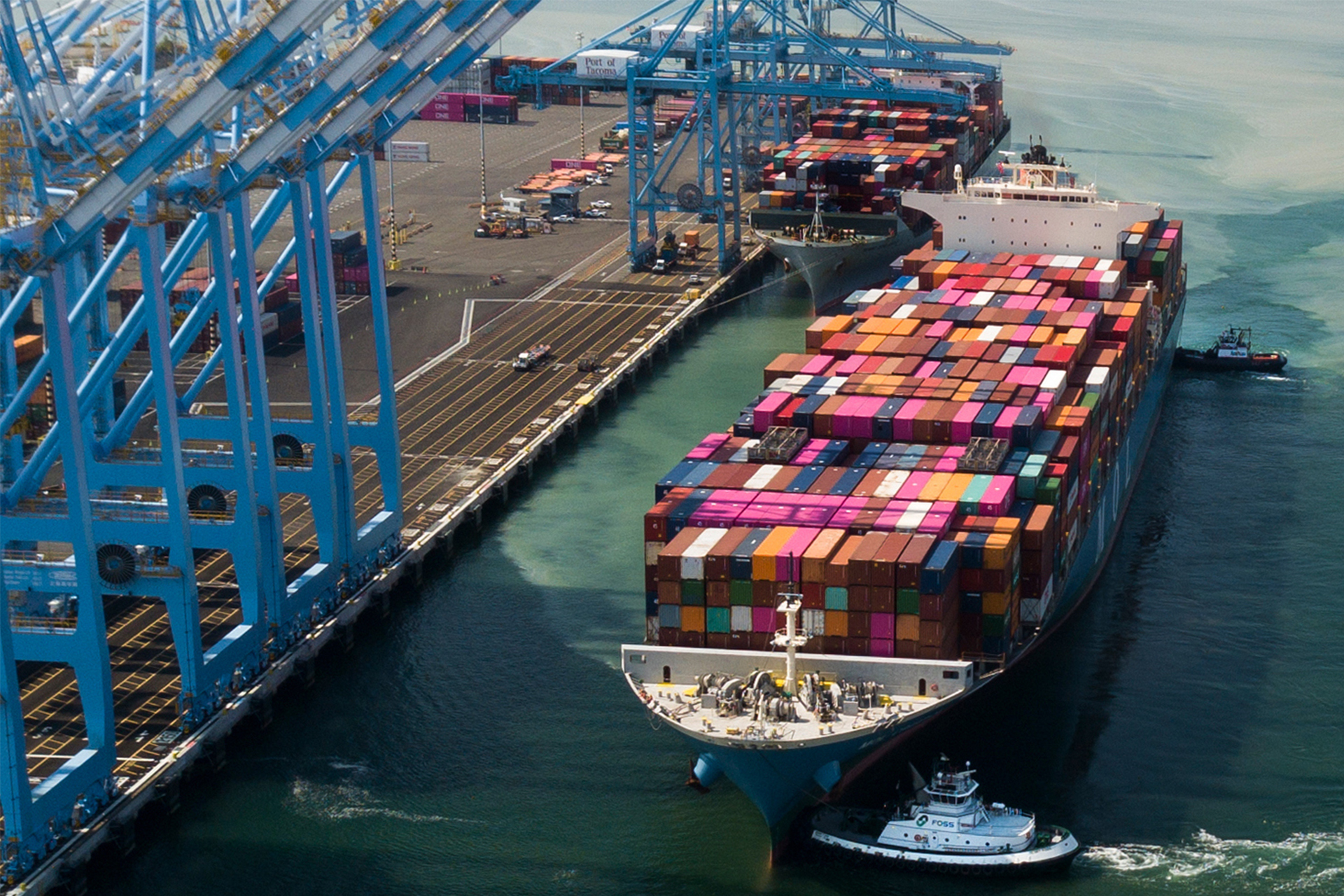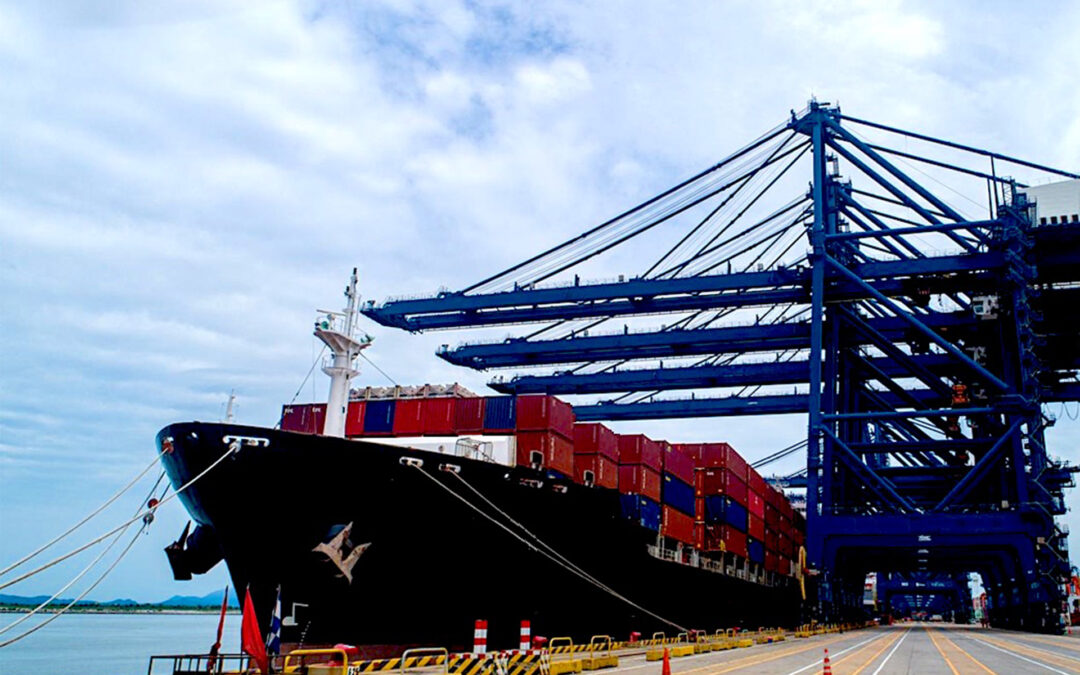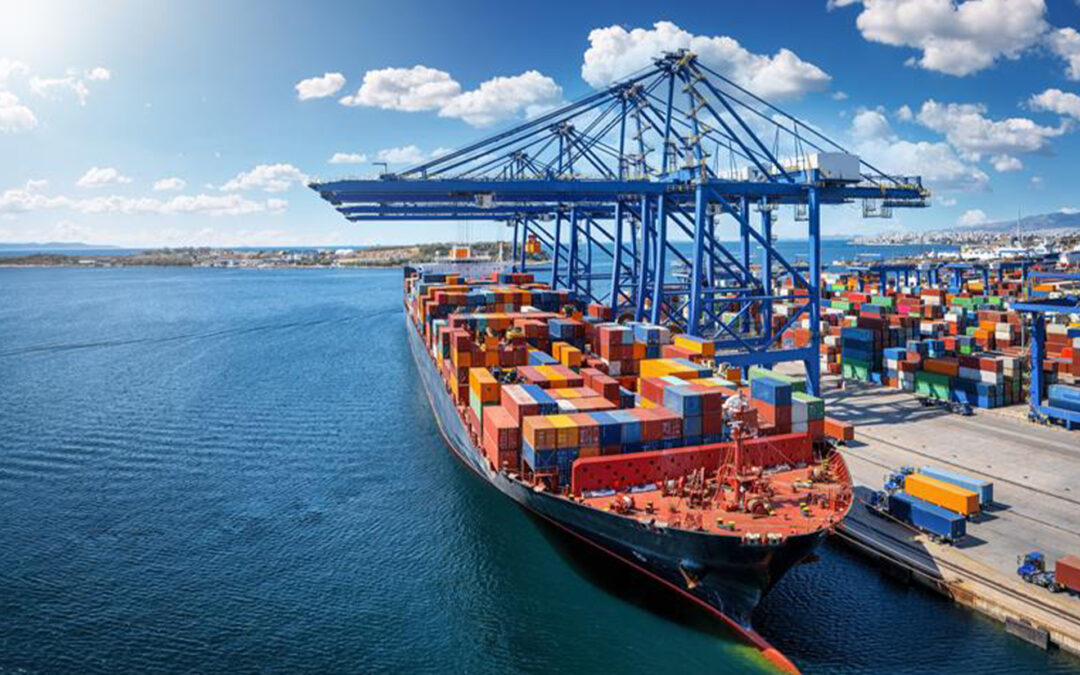The recent strike at East and Gulf Coast ports underscored the fact that shippers in the United States have to carefully consider how they approach international logistics in terms of how they move cargo and what expertise they need to keep products moving regularly and at a reasonable cost.
Craig Akers, executive director of the International Housewares Shippers Association (IHSA), cautions that the year ahead is going to be challenging for retailers and suppliers who are moving goods internationally. The recent suspension of the strike by the International Longshoremen’s Association union (ILA) may have been a relief, but ILU and the United States Maritime Alliance, or USMX, remain in negotiation for a final agreement that has to settle a key, or perhaps the key, issue in contention: automation.
Both sides have real stakes in the issue, with the ILA desiring to quash automation on the docks where its members work and USMX wanting to add more machines to cut operational costs. The deadline set is January 15, a notable point on the calendar as it comes when retailers are restocking for spring; when Chinese New Year, with its factory shutdowns, is approaching; and when shipping contracts are coming up for renewal. These are all factors that will figure into the strategies that the ILA and USMX will develop as the engage in their high stakes negotiations.
The strike itself has left certain issues unresolved, with congestion pricing charges already being floated, although some carriers are waving them off, Akers said. Still, others are waiting to consider conditions as backed up cargo moves through ports, with late October being the period when congestion prices may be applied by some.

Craig Akers, Executive Director, International Housewares Shippers Association (IHSA)
Beyond that, retailers concerned about a mid-January strike may start bringing products in early, as they did for the holidays, while facing an October 1 initial strike deadline. The combination of circumstances drove up the spot rates carriers charge for containers not covered by contracts to several times contact rates earlier this year after actually dipping below them last summer.
Akers said international shipping is a complicated process, subject to an array of destabilized factors both within and outside an industry that traverses international seaways and any number of trouble spots around the globe.
As if that wasn’t troublesome enough, international shipping is still trying to work out the consequences of the COVID-19 pandemic and its aftermath, even while dealing with current events.
To put it another way, supply chain is an evolving game, and one of the recent consequences has been the aforementioned higher international shipping rates, particularly for companies relying on the spot market for carrier space. Given the circumstances, change occurring in the sector is pushing businesses to generally reconsider how they source and move goods.
The pandemic demonstrated there are carriers that would like to move away from contracts, a staple of the shipping business, said IHSA’s Akers said.
Changing Approaches
In 2024, the carriers’ desire to do less contract business has been fed by demand for ship space. Last summer, Akers said, carriers were grateful for the contracts they had signed as spot rates fell below contracted levels. Unfortunately for shippers who shifted away from contracts to reliance on the spot market, carriers have had the upper hand as rates skyrocketed this year.
Thirty years ago, the spot market wasn’t a significant part of the shipping business. However, things have changed with market conditions, which was especially true during the pandemic and its immediate aftermath.
“The spot market came around so that carriers could fill the voids in their vessels,” Akers said. “The majority of their vessels were filled with contract cargo, and they just needed to fill up that last little void. Then, it started becoming a tool. If they wanted to get more market share they could by offering lower spot rate levels. When we went through the pandemic, it really showed where carriers wanted to go.”
What was a tool to gain market share became, as demand for carrier space intensified, a way to generate profits through higher rates. The dynamics, which include import volume and outside influences in the market such as fuel costs, insurance, regulation and international politics, make things even more complicated. As such, shippers should consider reexamining supply chain operations, especially given the unsettled nature of the shipping environment today.
Akers said shippers may want to ask, “What do you want, stability? Do you thrive on volatility? I would say stability wins the majority of the time. If your company is only going to be open for a year, go on spot. You can take that chance. But you’re going into a casino when you go out to the ocean freight industry, and you’ve got to treat it as such because you can lose everything at one table.”
What do you want, stability? Do you thrive on volatility? I would say stability wins the majority of the time. If your company is only going to be open for a year, go on spot. You can take that chance. But you’re going into a casino when you go out to the ocean freight industry, and you’ve got to treat it as such because you can lose everything at one table.
-Craig Akers, Executive Director, International Housewares Shippers Association
Another factor to fathom is that ocean shippers figure loyalty into their business practices. Shippers that jump around between contracts and the spot market when they see a short-term advantage might not get the same consideration as would a more consistent customer.
“At the end of the day, carriers look at loyalty and look at shipping patterns,” Akers said. “They look at the history of that shipper, so when that shipper wants more space or a competitive rate level, the carrier is going to take the relationship into consideration. And that relationship doesn’t just entail the conversation they’ve had with that company. It entails the performance.”
Shippers also should take into consideration the relationship with the carrier when they are thinking about signing a contract and if the carrier has been satisfactory with regard to the service provided and terms being addressed professionally.
When things have been tight, Akers said, shippers that have jumped in and out of the market for $10 or $50 or even $100 a container are generally the ones facing the stiffest challenges. Even if more carrier capacity comes on line in the coming months or other factors in the market drive down shipping costs, Akers said shippers should consider how relative stability might benefit their operations. Beyond extraordinary events, carriers understand annual shipping cycles and control rates. So, shippers relying on the spot market are going to see the same cost challenges year in and year out because of demand cycles, with the effect of extraordinary occurrences such as international conflicts being an additional concern.
Akers said the most likely shipping pattern going forward would be one for which carriers look at the opportunities.
“When’s peak season coming? Because carriers are going to do their best to capitalize on it. When’s Golden Week? When’s the Chinese New Year? Those are the time periods when carriers are going to capitalize. And if you haven’t been supporting a contract, they’re probably not going to give you the space that you want,” Akers said.
Weighing Risk
Akers said he has a particular point of view as he manages contracts for the IHSA, yet he wants to keep the range of shipper consideration. In some cases, shippers can grab some savings by tapping the spot market, but contracts help companies understand their margins and what their ceilings and floors might be as rates get updated each year. At times when spot rates are running below contract rates, the temptation is to look for savings in shipping costs.
Akers said that can be a mistake. Today’s ocean freight markets are of the kind that makes contracts attractive because they mitigate risk even in cases in which shippers might not want to move everything under such terms. Last year, when the spot market fell below the contract level, shippers couldn’t help but see the potential savings the spot provided. Akers said they should weigh the rebound in those rates against contract benefits that might be more evident now when spot rates significantly exceed those contracted.
There is one temptation that really should be avoided, Akers said. “Don’t try to increase your margins by utilizing your shipping,” he said.
Nothing indicates ocean freight rates will ease dramatically, or at least not in the short term. Even so, the August Supply Chain Volatility Index, an industry metric, indicated that, for the first time since April, carrier capacity exceeded demand with factors involved, including retailers in the United States having built holiday inventories early and relative weakness in European economies. That said, congestion could remain an issue as cargo landings are delayed by the strike work through the ports involved and shippers consider moving goods earlier than they might otherwise, at least until a final agreement between the ILA and USMX arrives.
Multiple Concerns
In the general course of business, and port strikes aside, navigating supply networks, especially international supply networks, will continue to be challenging. Lisa Anderson of the LMA Consulting Group, which advises business on supply chain, said a major challenge shippers face today is the number of disrupting factors occurring at the same time. Any one factor might not touch on or disrupt a particular supply chain for a given industry, but the number of factors occurring together puts pressure on the entire logistics environment and makes planning all the more problematic.
“Supply chain is rife with disruptions, and it’s not going to change any time soon,” Anderson said. “Too much volatility out there, uncertainty and ambiguity. That makes more and more of these disruptions arise. Recently, there was a drought in the Panama Canal, and that caused the capacity to be reduced by about 50%.”
The backup for product movement that was going through the Panama Canal to the East Coast of the United States was the Suez Canal until the Houthi rebels began attacking freight vessels in the Red Sea, which caused many carriers to avoid that alternate route. The attacks continue on an irregular basis, but they remain a constraint on trade. Then the Francis Scott Key Bridge collapse in Baltimore closed one of the nation’s busiest ports. The main channel reopened in June, but officials in Maryland don’t expect carriers to fully reroute to the port from alternates until next year.

Lisa Anderson, LMA Consulting Group
“When you get into this time of volatility,” Anderson said, “people look for more sources of supply, (such as) reshore, and they start to move things around, and that creates further disruptions. Disruptions are going to continue. Companies have to be thinking about the best way to navigate that successfully and get ahead of the game.”
Retailers and their suppliers should consider whether they have sufficient internal expertise to preposition inventory and find alternative sources of supply amid disruptions. Of note, Mexico surpassed China as a U.S. trading partner in 2023 as a result of nearshoring and remained on top through the first half of 2024, demonstrating the nearshoring trend has become a bigger factor in global trade dynamics.
The Purchasing Managers Index from the Institute for Supply Management is important to anyone interested in immediate shipping trends. Decisions made about purchasing are the foundation of shipping demand. The PMI for manufacturing has been in contraction territory recently, but not down so much as to suggest that the overall economy is contracting. The PMI for the services sector has been tending toward expansion. The third sector ISM monitors, hospitals, has been in positive territory all year. Overall, the PMI and Supply Chain Volatility Index suggest some slack in shipping demand going forward, which could translate into at least plateauing, if not easing rates, putting strikes and international developments aside.
Multiple Concerns
In the general course of business, and port strikes aside, navigating supply networks, especially international supply networks, will continue to be challenging. Lisa Anderson of the LMA Consulting Group, which advises business on supply chain, said a major challenge shippers face today is the number of disrupting factors occurring at the same time. Any one factor might not touch on or disrupt a particular supply chain for a given industry, but the number of factors occurring together puts pressure on the entire logistics environment and makes planning all the more problematic.
“Supply chain is rife with disruptions, and it’s not going to change any time soon,” Anderson said. “Too much volatility out there, uncertainty and ambiguity. That makes more and more of these disruptions arise. Recently, there was a drought in the Panama Canal, and that caused the capacity to be reduced by about 50%.”
The backup for product movement that was going through the Panama Canal to the East Coast of the United States was the Suez Canal until the Houthi rebels began attacking freight vessels in the Red Sea, which caused many carriers to avoid that alternate route. The attacks continue on an irregular basis, but they remain a constraint on trade. Then the Francis Scott Key Bridge collapse in Baltimore closed one of the nation’s busiest ports. The main channel reopened in June, but officials in Maryland don’t expect carriers to fully reroute to the port from alternates until next year.
“When you get into this time of volatility,” Anderson said, “people look for more sources of supply, (such as) reshore, and they start to move things around, and that creates further disruptions. Disruptions are going to continue. Companies have to be thinking about the best way to navigate that successfully and get ahead of the game.”
Retailers and their suppliers should consider whether they have sufficient internal expertise to preposition inventory and find alternative sources of supply amid disruptions. Of note, Mexico surpassed China as a U.S. trading partner in 2023 as a result of nearshoring and remained on top through the first half of 2024, demonstrating the nearshoring trend has become a bigger factor in global trade dynamics.
The Purchasing Managers Index from the Institute for Supply Management is important to anyone interested in immediate shipping trends. Decisions made about purchasing are the foundation of shipping demand. The PMI for manufacturing has been in contraction territory recently, but not down so much as to suggest that the overall economy is contracting. The PMI for the services sector has been tending toward expansion. The third sector ISM monitors, hospitals, has been in positive territory all year. Overall, the PMI and Supply Chain Volatility Index suggest some slack in shipping demand going forward, which could translate into at least plateauing, if not easing rates, putting strikes and international developments aside.
At the Start
Steve Miller, chair of the Institute for Supply Management Services Business Survey Committee, said internal workings of the retail industry are playing into how supply chains function in the immediate and longer term. The ISM provides certification, development, education and research for individuals and corporations in the supply management and purchasing professions and a monthly report on business for the services, manufacturing and hospitals sectors.
In terms of purchasing and its effect on the supply chain, international issues begin on the ground. From that perspective, Miller said, more companies are doing less with China. However, he noted that Mexico, even as it becomes a more important trading partner, is subject to challenges because of a lack of key manufacturing and supply chain skills. More recently, the nomadic nature of international manufacturing has become evident in Mexico, where plants are manufacturing electric vehicles with all Chinese parts, Miller said.
Anderson said consideration of Mexico for products with high labor content is one way to address concerns about international trade, as is doing more U.S. manufacturing in those cases where automation can mitigate labor costs. However, when it comes to trade, even reshoring has its complications. As has happened in the past with home textiles, companies in China that have been using Mexico as a route to circumvent tariffs and other trade regulations can cause disruptions that could draw a response in upcoming trade talks between the U.S., Mexico and Canada.
Changes in U.S. retailing also make reshoring more attractive as a way to help respond to rapid changes in demand and faster delivery to consumers, Anderson says.

Steve Miller, Chair, Institute for Supply Management Services Business Survey Committee
Companies also need to address the increasing consumer desire for transparency and the U.S. government’s insistence as to the origins of their potential purchases and conditions at such places.
“There certainly is an increase of expertise in supply chain and procurement and partially what’s responsible is major universities formalizing supply chain and procurement programs,” Miller said. “Together with that, you’re seeing people move across industries. They’ve developed procurement expertise and intel at General Motors and GE in the day.”
As such, procurement and supply professionals who have honed their expertise at companies that have traditionally had robust international logistical networks have been moving across industries and bringing their knowledge, experience and best practices with them.
With recent events in mind, many businesses have made developing better, more manageable supply chains a greater priority, in part by getting a better understanding of where chokepoints might exist and which companies might be less reliable partners.
Said Miller: “Within manufacturing supporting retail, we’re getting better perspectives on upstream supply chain, and upstream supply chain flexibility, so that when you have that solid state memory plant get wiped out, 90% or 80% of the industry isn’t affected because you didn’t know there was this one supplier that was supplying all your secondary suppliers. That’s become much more of a priority.”
A strong, long-term-minded supply chain operation requires due consideration of how the market operates and, by extension, investment in capable employees. That is especially salient today when companies are considering alternative sourcing locations to hedge against disruptions in those that have been primary or even exclusive.
IHSA’s Akers said hiring capable logistics personnel and trusting the decisions they make is the basis of a solid operation. Specialist staff who constantly monitor conditions and costs are in the best position to ensure efficient shipping operation and relative stability. Companies that hire experienced and knowledgeable supply chain staffers and rely on their guidance can avoid making costly mistakes and stay on top of events as well as seize opportunities to improve logistics operations. They also can be critical if companies are looking to enhance supply chain flexibility, which can be an effective hedge against disruption but also make operations more complex.
“If you’ve got a logistics person, you’re getting your containers, things are coming through, you have to trust that these people are doing their jobs and are doing them correctly,” Akers said. “So how can you trust them to do their jobs? How do you know that these guys know and understand what they need to? And this is a plug for us, but that’s what I believe shippers associations should be doing. You should be able to go to your shippers associations and ask them questions.”
Shipping associations such as the IHSA provide expert advice and contract leverage, and, naturally, Akers suggests housewares industry members take advantage of the services offered to improve their position in the marketplace. Still, whatever way shippers approach ocean freight, it should be done with a deep appreciation of the risks involved and the fact that vessels are in limited supply.
Within manufacturing supporting retail, we’re getting better perspectives on upstream supply chain, and upstream supply chain flexibility, so that when you have that solid state memory plant get wiped out, 90% or 80% of the industry isn’t affected because you didn’t know there was this one supplier that was supplying all your secondary suppliers. That’s become much more of a priority.
– Steve Miller, Chair, Institute for Supply Management Services Business Survey Committee
Akers said IHSA is open to discussing shipping questions even with housewares companies not using its services.
“Do I want your containers to move through the shippers association? Of course, I do.” Akers said. “It gives the shippers association power and gives the member power. I want that to happen, but I want companies to be viable for a long time, and I want them to come back to us if they want to or in a don’t-put-your-eggs-in-one-basket deal. But they need a trusted industry resource, and that’s what I want us to be for the housewares industry.”
Flexibility and resilience also means upgrading processes. As retailers look at and even reconsider supply chain, developing supply sources in unfamiliar geographies can be a step toward greater flexibility. LMA’s Anderson warns, however, that, in doing so, companies need to have feet on the ground, whether those belonging to their own employees or trusted partners, to gain a true understanding of the market both as advertised and as operating. The differences between perceived conditions in a given geography and the reality can be attributed to anything from the frequency of extreme weather to local business customs to regulatory realities. So, having someone in the market who can provide a solid assessment of what actually goes on is important in understanding if a specific site aligns with a company’s unique needs. In that way, a business can develop supply chain flexibility on a sound foundation and minimize risk and volatility.
Support of expertise is critical in the face of risk and volatility on the ground and in the office.
“The geopolitical risk is not just what’s reported in the news,” Anderson said. “There’s a lot going on in the international supply chain and behind the scenes. If they’re just looking at what’s reported, they will not succeed. They will have to be smarter. If I move my supply chain to a certain country in Latin America, what is going on that could cause a port delay? Do they have water, do they have energy, what could be cut off in partnering with a country that’s something like our enemy? You have to do it or you have to find advisors and others where you can get that kind of information.”
Some companies do the leg work, but others may not be getting local information as they should.
“They’re so ingrained at looking at the cost, which we have to do, we have to make sure we’re providing a cost-effective product,” Anderson continued. “But they’re missing what might happen down the line. Some of this can relate to regulatory environments and what policies are likely to come out of various areas, which you could call geopolitics, but sometimes it’s not as obvious.”
AI Role
Technology can enhance the development and enhancement of expertise in a company’s supply chain operation, Anderson noted. The software is now so advanced that it can require organizational change in its application. AI can take some basic tasks and automate them, freeing staff to deal with supply chains that are, by nature, constantly in motion both in the immediate sense, as in goods moving through, but also in terms of how companies think about sourcing as conditions change in the global marketplace. Less grunt work can mean more investigation and analysis that can help companies do a better job of anticipating challenges and opportunities.
The dissemination of technologies such as AI “will increase the need for somebody who can think big picture and details and understand what’s going on around the world,” Anderson said. “No computer can figure out the situation and understand the nuances: What are your company objectives? What’s important to customers? You need somebody who is highly skilled to handle that, to make sure AI is giving you reasonable expectations.”
Supply chain, ocean freight, trucking and the whole sweep of logistics is evolving rapidly today. Companies in a position to adapt continually are going to have an advantage.
“I think we are at an inflection point,” Anderson said. “I keep saying that the winners are going to be separated from the losers over the next few years more than typically happens.”
Those companies that aren’t investing in supply chain modernization, telling themselves they’re going to ride out the current challenges and hope things work out for them, are more likely to get caught short and pay the price in dollars and competitive position, she said. Although advantages in shipping costs and inventory management can emerge from more effective supply chain operations, logistical consistency and the ability to deliver what customers need when they need it remains central to any functional improvement.
“The smarter companies are going to be providing stability to their customers,” Anderson said. “Another aspect of this is retailers that aren’t necessarily purchasing as much on a cost basis and looking for more strategic partnerships and even vertically integrating to create as much supply chain stability as they can.”





